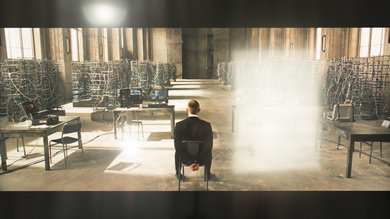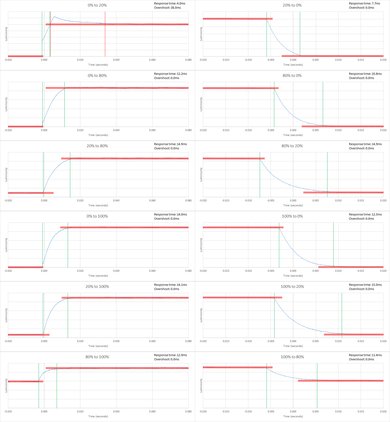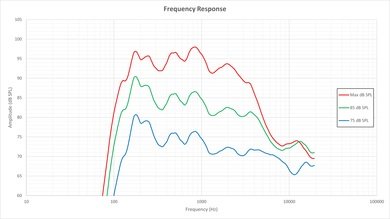The Sony R510C LED TV has great blacks, but only from directly in front. As soon as you are off-axis, the blacks become gray. It has the most limited viewing angle that we have measured so far.
Our Verdict
The narrow viewing angle of the Sony R510C is not ideal in a dark room, even if you sit alone and directly in front of your TV. You will see great blacks at the center of the screen, but not on the edges. The motion blur is good, but the input lag is only average, so it isn't ideal for gaming either.
-
Great contrast ratio.
-
Low amount of motion blur.
-
Worst viewing angle that we have ever measured. The blacks are gray as soon as you are not exactly in front.
- 6.4 Mixed Usage
- 5.4 Movies
- 6.6 TV Shows
- 7.1 Sports
- 7.3 Video Games
- 4.6 HDR Movies
- 4.4 HDR Gaming
- 4.8 PC Monitor
Changelog
Check Price
Test Results
The Sony R510C doesn't look bad for a budget LED TV. The bezel is not the thinnest, but the top half of the TV is slim.
From straight on, the blacks are really deep. We had to turn on 'LED Motion Mode' to get close to our 100 cd/m2 target, because without it, the minimum backlight was 157.1 cd/m2.
Not only do the colors desaturate at an angle, but the blacks become gray even faster. Even if you are sitting straight in axis, it can be an issue on the left and right side of the TV.
Update 01/06/2017: We have changed the methodology of testing. Since this is an old TV which we don't have anymore, we extrapolated the results from 2016 TVs.
This is very interesting. It actually has the best black uniformity that we have ever seen, but due to its very narrow viewing angle, the blacks on the left and right side appear considerably brighter. The picture was taken at seven feet (we test TVs at a 1.75 ratio of size to distance). For the 48", you will need to be at about 14 feet to not see this.
The blur trail of moving objects is short. It also has a strobing mode to clarify the picture, although it doesn't work very well (see picture here).
Unfortunately, all movies will suffer from the 3:2 pulldown judder. Most people won't be bothered by this though, because it is a small constant judder.
The picture mode doesn't really matter for the input lag. Game had 45.8 ms and the other ones had 46.5 ms.
The chroma 4:4:4 test was almost a pass, but the pixels overlap a little bit.
This TV doesn't produce a lot of bass, but it does get loud. The frequency response is good at lower volumes, but it falls apart when the TV is pushed hard. There will also be significant compression and pumping artifacts present at high volumes.
Comments
Sony R510C: Main Discussion
Let us know why you want us to review the product here, or encourage others to vote for this product.








































































